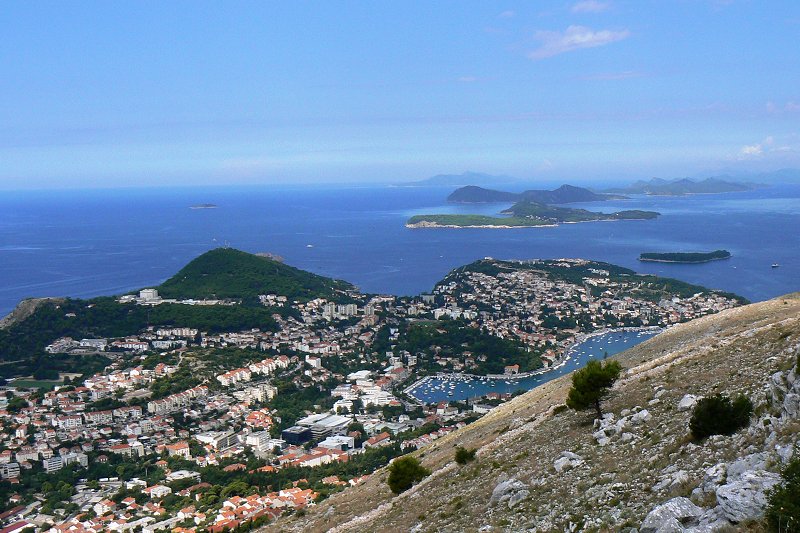 Dubrovnik, Croatia
Dubrovnik, CroatiaSource: https://commons.wikimedia.org/wiki/File:Afores_dubrovnik_2.JPG
Author: Fajardoalacant

Dubrovnik (Italian: Ragusa) is a city and seaport near the southernmost tip of Croatia. It covers 21.35 sq km (8.2 sq mi) and has a population of 43,000 people (2011 estimate). The city today its a major tourist destination for Croatia. Its historic center is recognized as a World Heritage Site entitled Old City of Dubrovnik.
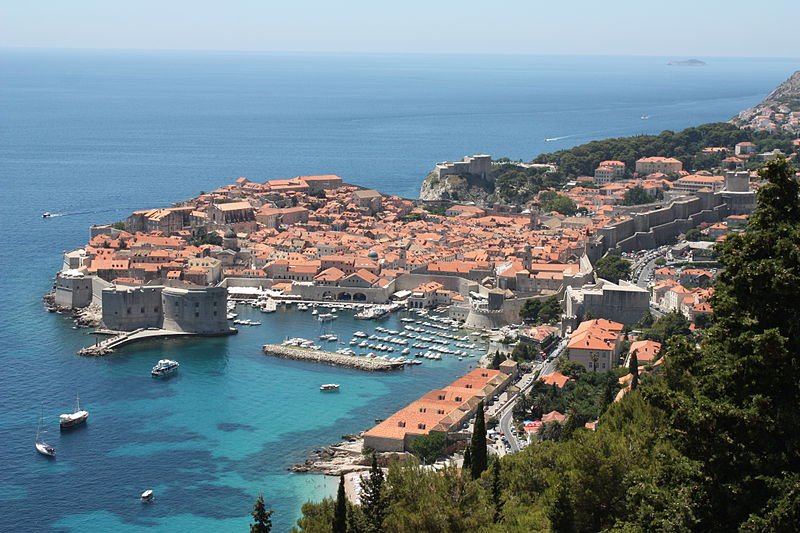 View of the city of Dubrovnik
View of the city of DubrovnikSource: https://commons.wikimedia.org/wiki/File:Dubrovnik_june_2011..JPG
Author: Bracodbk

Dubrovnik experiences a Mediterranean climate. August is the hottest month, when the average temperature rises to 28.9°C (84°F). January is the coldest month, when the average low temperature drops to 7°C (44.6°F). November receives the most rain, at 141 mm (5.551 in).
There are different theories surrounding how Dubrovnik was founded. In one of them, the area was settled in the 7th century by refugees from the Dalmatian coast fleeing Slavic invasion. Another theory holds that Dubrovnik was first settled by Greek sailors who were sailing between the Greek villages of Budva and Korčula.
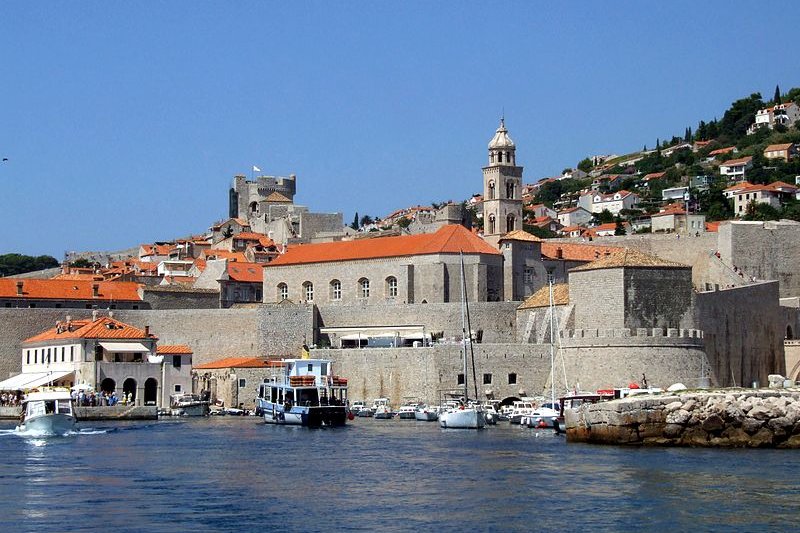 Harbor and city walls of Dubrovnik
Harbor and city walls of DubrovnikSource: https://commons.wikimedia.org/wiki/File:Dubrownik_-_harbour.jpg
Author: Pudelek

After periods where it was ruled by the Ostrogoths and then the Byzantine, by the 13th century Ragusa (as Dubrovik was known at that time) came under the rule of Venice. This was so until 1358, when it became a semi-independent state within the Kingdom of Hungary. A century later, although still a free state, it became a vassal to the Ottoman Empire, which was to last from 1440 all the way till 1804. It was during this period, particularly between that 15th and 16th century, that the Republic of Ragusa achieved its peak.
Ragusa was captured by the Napoleonic army in 1806, and two years later, it was added into Napoleon's Kingdom of Italy. In 1815, through the Congress of Vienna, Ragusa came under the rule of the Habsburg Empire, as part of the Kingdom of Dalmatia. The Austro-Hungarians were to rule Ragusa until 1918, when the empire collapsed, the the city was incorporated into the new Kingdom of Serbs, Croats and Slovenes. This was when the city was renamed from Ragusa to Dubrovnik. It later came under the rule of the Kingdom of Yugoslavia, and subsequently the Socialist Federal Republic of Yugoslavia.
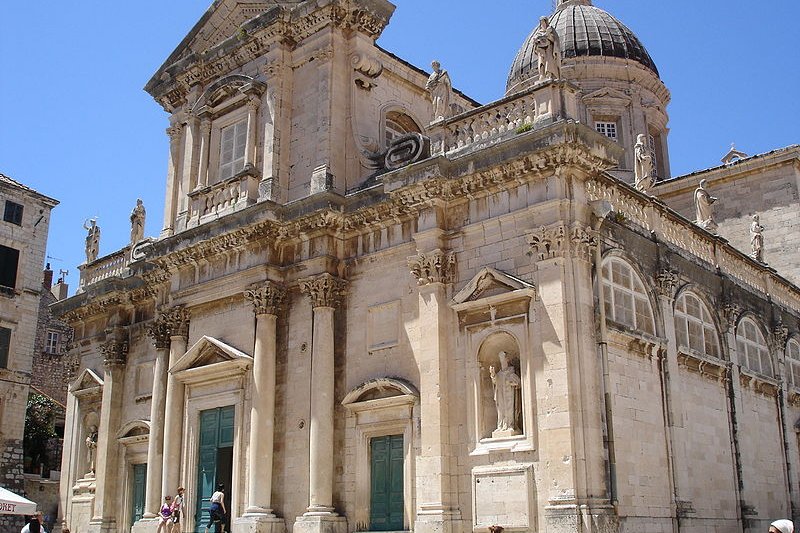 Cathedral of Dubrovnik
Cathedral of DubrovnikSource: https://commons.wikimedia.org/wiki/File:DubrovnikDSC00158.JPG
Author: Veselin Atanasov

When Yugoslavia began to disintegrate in 1991, Croatia declared its independence, and the Socialist Republic of Croatia became the Republic of Croatia. The city was attacked by the Yugoslav People's Army on 1 October, 1991, which began a siege of seven months, resulting in the death of some 114 civilians. The city was only liberated in May 1992.
Since peace has returned to Croatia, Dubrovnik has been mending its damaged heritage sites. By 2005, most of the damages have been repaired. The city is once again gearing itself to be a major tourist destination on the southernmost part of Croatia.
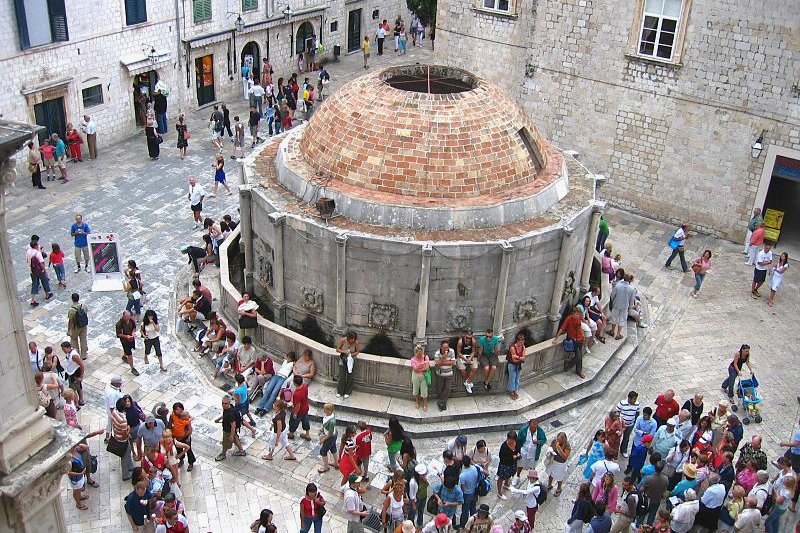 Onofrio's Fountain, Dubrovnik
Onofrio's Fountain, DubrovnikSource: https://commons.wikimedia.org/wiki/File:Onofrio%27s_Fountain,_Dubrovnik,_Croatia.JPG
Author: Neoneo13

World Heritage Inscription
The Old City of Dubrovnik was inscribed as a World Heritage Site in 1979.Visiting Dubrovnik
You can fly to Dubrovik, arriving at the Dubrovnik Airport (DBV), located some 20 km to the south of the city. There are buses from the airport to the main bus terminal, located about 2.5 km northwest of the Old Town. Journey takes about 45 minutes.Places of Interest in Dubrovnik
- Big Fountain of Onofrio (Velika Onofrijeva Fontana)
This is the best-known landmark of Dubrovnik. It was built by Neapolitan architect Onofrio de la Cave in 1438-44. - Cathedral and Treasury (Velika Gospa)
The Cathedral of Dubrovnik was built in 1667. It houses masterpieces by Italian and Dalmatian artists from the 16th to 18th centuries. Next to it is the Cathedral Treasury, which contacts about 200 reliquaries, including the arm of St Blaise from the 13th century. - Church of St Blaise (Crkva Sv. Vlaha)
Church first built in the 17th century, and rebuilt in the 18th. It contains a good collection of Baroque works of art. - Church of St. Saviour (Sv. Spas)
Church in the Venetian-Dalmatian Renaissance style built after the earthquake of 1520. - Dominican Monastery (Dominikanski Samostan)
Monastery first built in 1315, necessitating the enlargement of the city walls. It houses the Dominican Monastery Museum (Muzej Dominikanskog Samostana), with works of art from the Dubrovnik School. - Fort of St John (Tvrda Sv. Ivana)
One of the fortresses that defended the harbor. It is now occupied by the Maritime Museum (Pomorski Muzej) and Aquarium (akvarij). - Franciscan Monastery (Franjevački Samostan)
First built in 1317, the monastery was destroyed by earthquake and was rebuilt in 1667. Only same parts escaped quake damage. Today the monastery houses a museum showcasing religious works of art. - Gradske Zidine
These are the walls that protected Dubrovnik during medieval times. They were built in the 10th century, with modifications in the 13th century. Some parts reach a height of 25 m (82 ft). - Gradska Vrata Pile (Pile Gate)
This is the main entrance through the city walls of Dubrovnik. A stone bridge over a moat leads to the gate. - Lokrum
Island some 700 meters off shore from Dubrovnik, today a nature reserve. - Min&$269;eta Tower
This tower is the most popular site along the city wall. it was built in 1461. It comprises a semi-circular tower topped by a second tower. - Ploče Gate (Vrata od Ploča)
This is another medieval gate to the city, built in 1300, and reached by another stone bridge from the Revelin Fort, built in 1538. - Rector's Palace (Knežev Dvor)
This was the political and administrative center for Ragusa during medieval times. It was built in 1435, with its portico added in 1465. Today the palace houses the Museum of Dubrovnik (Dubrovački Muzej). - Square of the Loggia Luža
This square is the nerve center of Dubrovnik, surrounding by important landmarks. Among the sights here include Orlando's Column, Gradski Zvonik (clock tower), Loggia of the Bell, Main Guard House and Small Fountain of Onofrio. - Sponza Palace (Palač Sponza)
Historic building located near the Square of the Loggia Luža. It was built in 1516-22. - Stradùn
A busy pedestrian street in Dubrovnik. It dates back to the 12th century, and is today lined with bars, cafés and restaurants. - Trsteno
Site of an aboretum some 20 km (12 mi) from Dubrovnik.
 Latest updates on Penang Travel Tips
Latest updates on Penang Travel Tips

Copyright © 2003-2025 Timothy Tye. All Rights Reserved.

 Go Back
Go Back